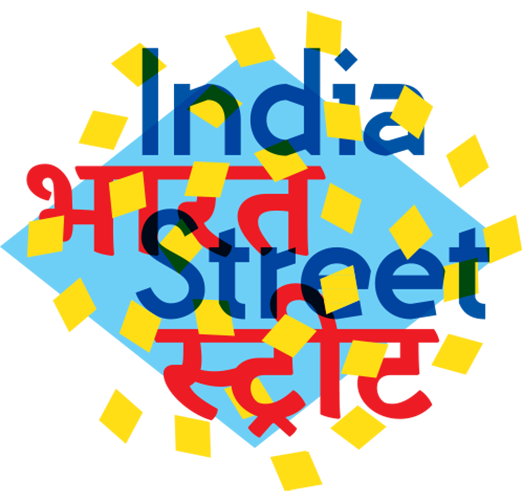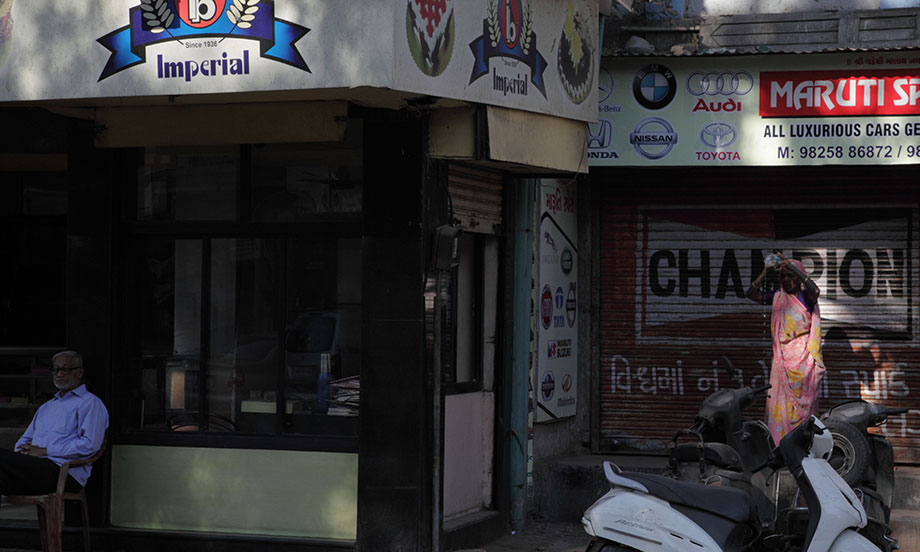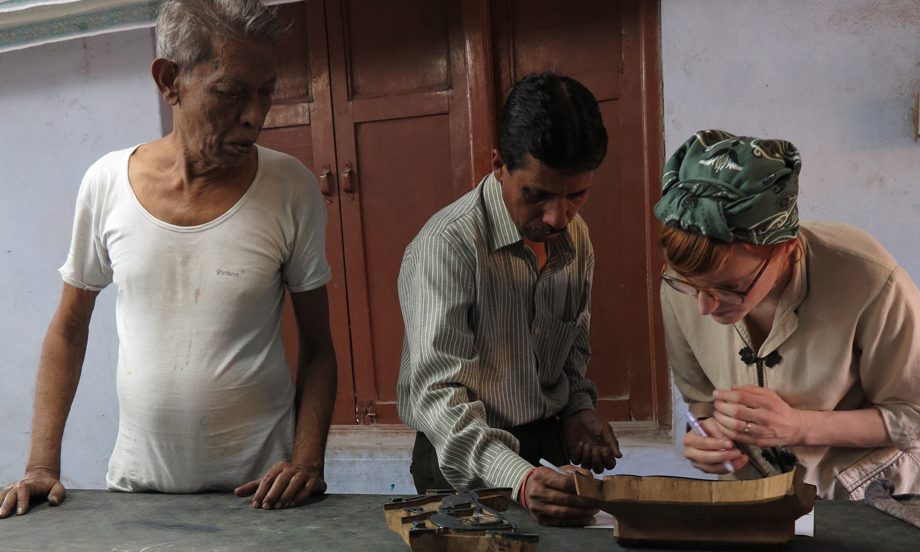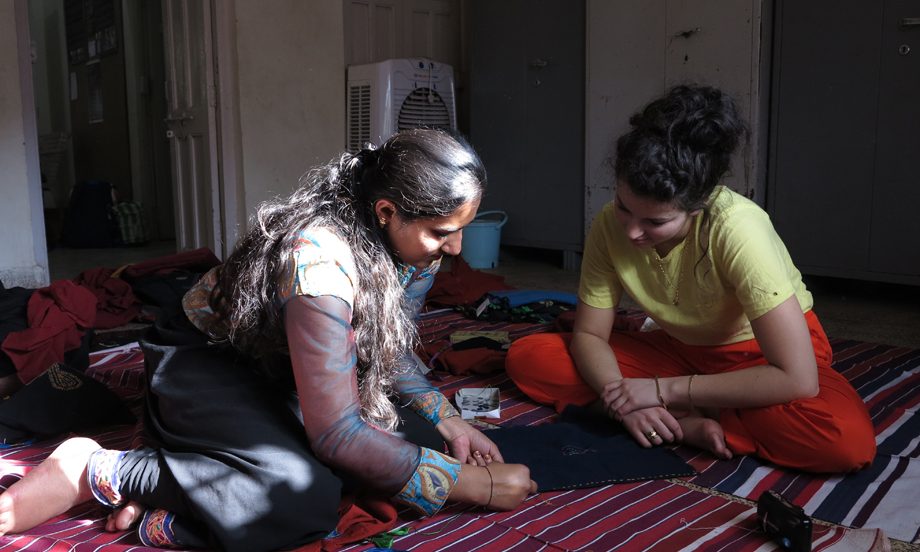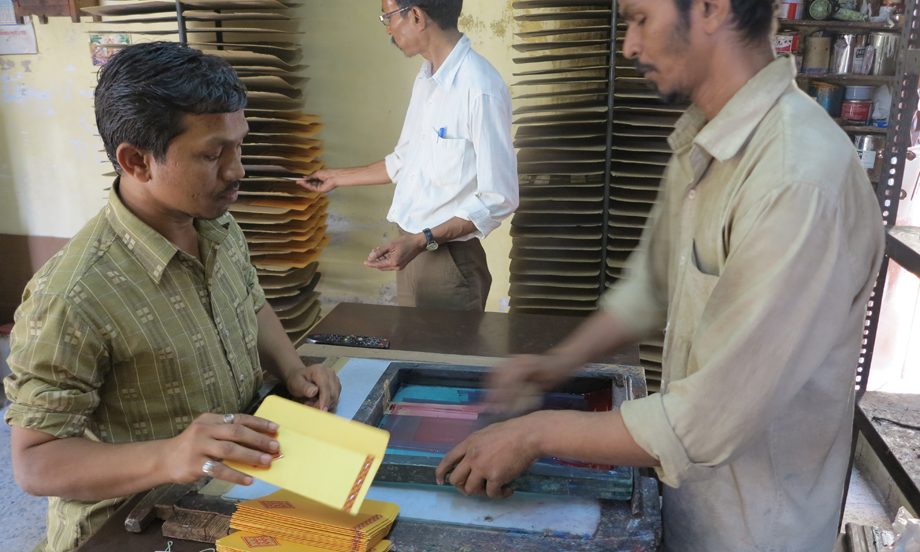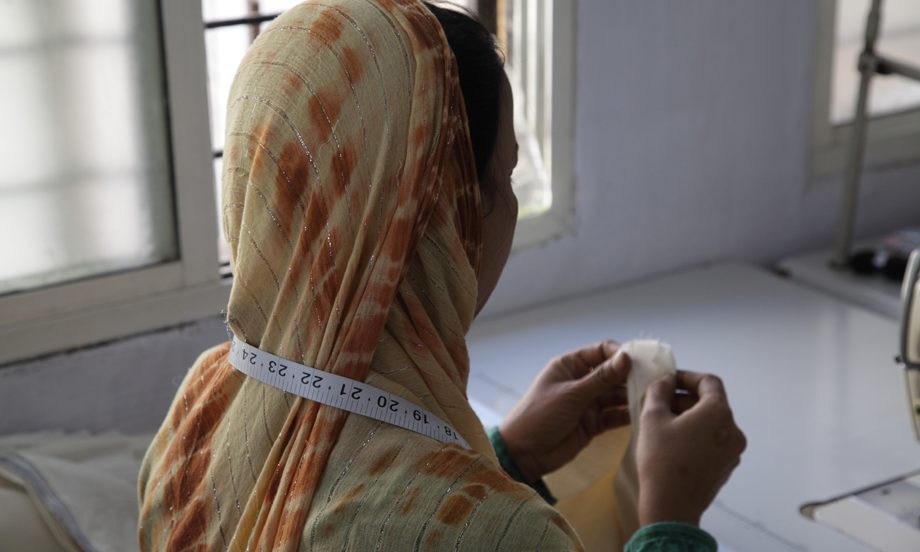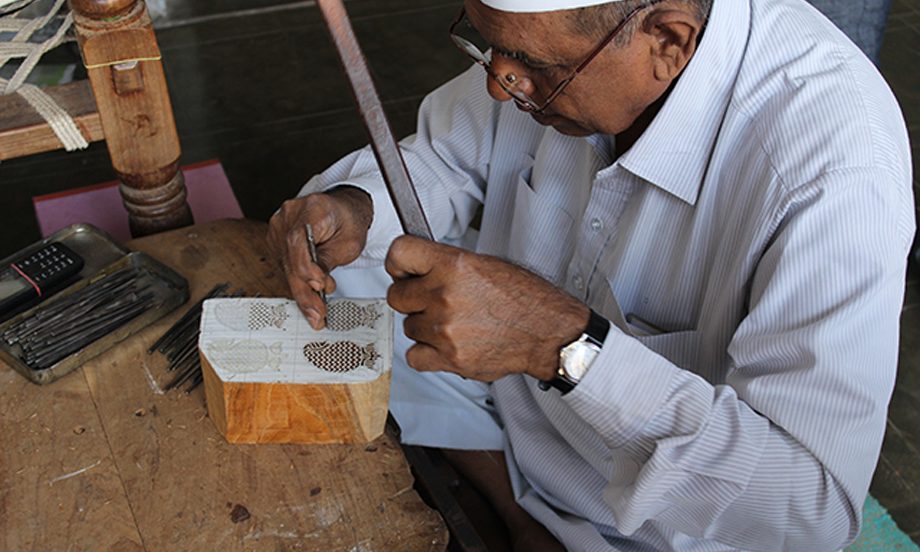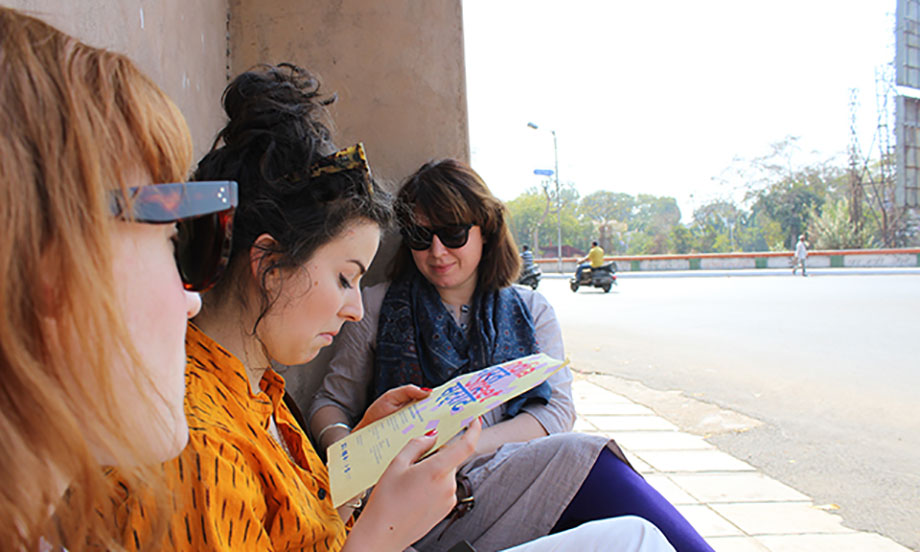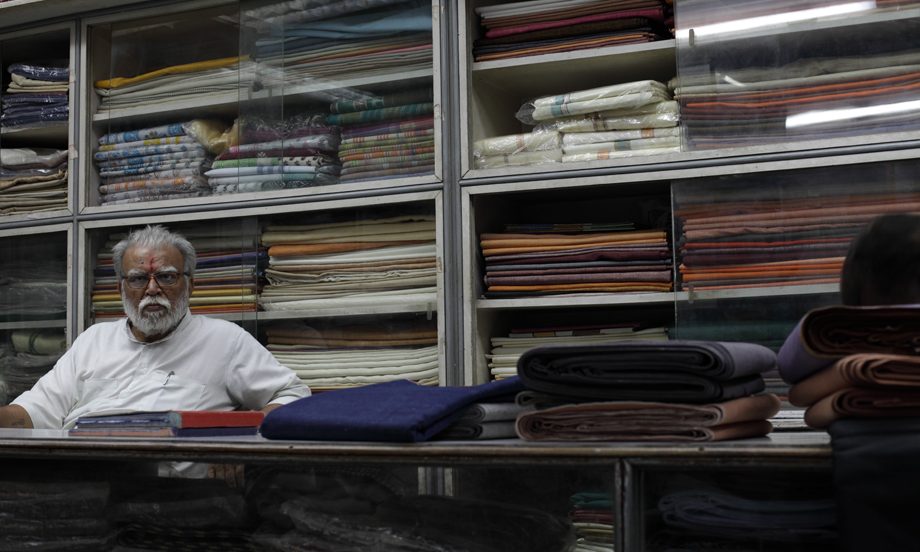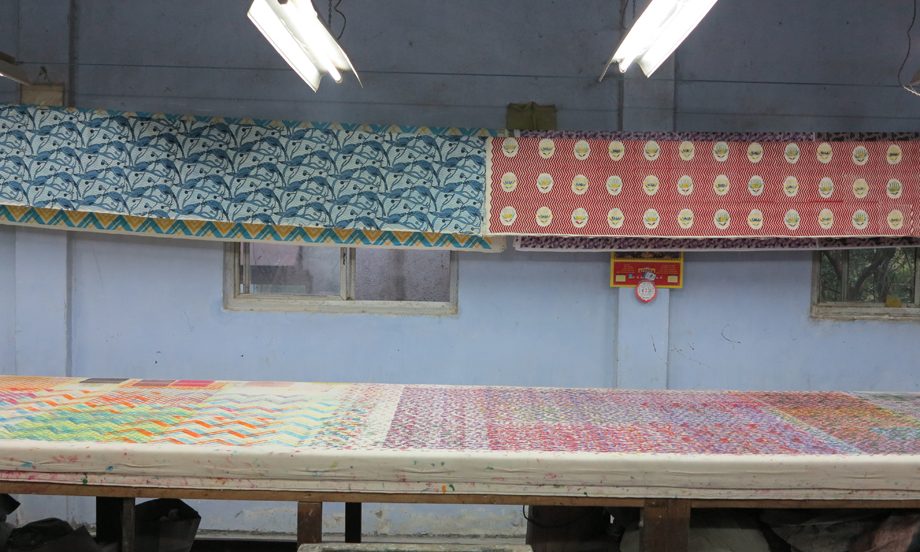Part 2: Building Blocks
Building Blocks diary as told by Charlotte Linton
Day 1
Initial thoughts on India – a surprising amount of airport bureaucracy, the beautiful light, animals and vehicles everywhere. Monkeys – are they Grey Langurs? Goats, cows, dogs, palm squirrels, working donkeys, auto rickshaws, bicycles, scooters, buses with no doors or windows. Cricket, dust, pollution, heat, noise, and colour. It is 25°C and the sun is still rising. We visit the market place. Our walk takes us past the old Stock exchange which is presided over by a bust of Lord Mountbatten – the last Viceroy of India. It’s now inhabited by the caretaker and his family and is in a considerable state of disrepair.
Day 2
We visit Parijat Studio, and meet with the owner Paloumi to discuss blocks and colours. We spend some time trying to iron out issues with the blocks. I have designed mine with the mind of a screen printer, attempting to over print two colours to produce a third colour and create a design that hides the point where the repeat meets. This has confused the printers and we work with the master trying to explain how the repeat should be arranged. The imperfections produced by block printing are part of their beauty showing that a cloth has been hand printed, therefore if the repeat doesn’t match perfectly it should be revered not concealed!
Day 3
We arrive at Somaiya Kala Vidya, the design school in Adipur. We are introduced to Hariyaben, Sajnuben, and Zakiya – Rabari artisans who specialise in Bandhani and Embroidery. Their skills have been passed down through generations classically employed for use on wedding garments and traditional wear. Now they use them to make saleable products which are sought-after by the international market, tourists and wealthier Indian citizens. The women are inspirational – their talents and ambitions apparent.
Day 4
We visit Ajrakpur. The ancient pattern of Ajrakh which takes its name from this village is over 500 years old. Soyab Khatri, the Ajrak printer, tells us about the different natural dyestuffs and mordents that are used to colour the fabric. Printers are highly skilled and an apprentice will spend 3 years as a washer before they are able to learn to print. It took Soyab 3 months to learn the basic skills for printing. Batik is also a family tradition and the printer expresses that all 67 members of his family are involved in the trade. Although utilising blocks, printing with wax is a very different process. Before the advent of the paraffin variant, wax was extracted from seeds of a berry and worked in the same way as paraffin – melting with heat, solidifying as it cools. The work is carried out early in the morning so that the wax does not melt with the heat of the day. The block is softly dipped in the wax, flicked with the wrist and printed. Once the wax has dried the cloth can be dyed. The origins of batik are debatable. It is an ancient technique that can be traced back to India, Egypt and Indonesia. The artist point out however that in the local dialect Kutchi, bat translates as crack – cracks being a key feature of batik fabric.
Day 5
Primed with a better understanding of the process after our experience in Kutch, we receive an introduction to block printing at the workshop. We are assigned a printer and begin to experiment, trying different colour combinations with our blocks, mixing in some old, traditional or geometric patterns from Paloumi’s archive. Unlike the printers of Ajrakpur, Parijat Studios uses modern pigments for printing. The paste is kept on a trolley so that the printer can move it along as he works and keep spare blocks on a shelf beneath the paste. The block is lined up by eye on the cloth and is carefully placed down and given two or three hammers with the fist so that an even amount of pressure is applied to the blocks surface. On the way home we stop by the screen printers that is based in the Pol. In a tiny workshop we see the printers producing the flyers that Emlyn has designed. The speed and accuracy of the printing is incredible, two men work like a machine – one lifting the screen and placing the paper, the other pulling the squeegee to apply the colour.
Day 6
We visit Design Deals, the workshop of Villou Mirza, an ex-director of NIFT Gandhinagar and a key figure in the establishment of the SEWA organisation. The workshop is housed in a building that once served as a life skills school for girls of the Parsi community. The Parsi were traditionally an orthodox society following Zoroastrianism. Fleeing from the Muslim invasion of Persia between the 8th and 10th centuries the Parsi settled in India and for generations maintained their culture following endogamic marriage. With the onset of modernity some members of the community became assimilated into Indian society and the diaspora in Gujarat disbanded. The workshop, which has NGO charitable status, still employs members of the remaining Parsi community in Ahmedabad but it is now independent and run solely by Villou, herself a Parsi. On our way home meet Mr Parmar, a tailor who lives and works in the Pol. Mr Parmar predominately makes men’s garments. He has a small shop front on the main road where he works alongside two other tailors and has more employees who work in a larger premises nearby.
Day 7
We visit the home of a Master carver Pethapur. Govindhal Prajapati’s family have been making blocks for over 300 years. He explained how the previous generation were no longer able to make a sufficient living from carving – presumably due to the post independence boom in mass manufacturing so they moved into industry instead. The blocks are made from local cedar wood, cut to shape and the design is marked out. Using a hand drill, small holes are carved around the design that are then joined up with a small chisel. The rest of the wood is carefully carved out and the detail that can be achieved admirable.
Day 8
In the morning we visit the Calico Museum to view the textile collection. A morning filled with awe as we marvel at the time and skill taken to create this panoply of national textiles, sampling the best block printing, embroidery and weaving one could wish to see. This awe is simultaneously mixed with concern as conservation doesn’t seem to be a priority for this collection.
Day 9
The day is spent block printing in the studio and a trip to buy more Khadi is factored in. We visit two khadi stores over the period of our stay, both selling beautiful, hand spun and woven khadi mostly plain weave but some with check or stripe. Khadi comes in a variety of weights and textures and is kept in a special area reserved for the prestigious cloth.
Day 10
Another day block printing and it seems we are finally getting somewhere with our blocks. Emlyn and I return to the roots of the project incorporating colours that resonate strongly with Turkey red. Gabriella and Laura successfully push forward with their sensitive but bold use of colour so key to their practice. The day is followed by a trip to the cinema to watch Badlapur – a tail of crime, love and revenge with some questionable views on the treatment of women! Without subtitles, LOkesh narrates – a Chinese whispers style translation ensues.
